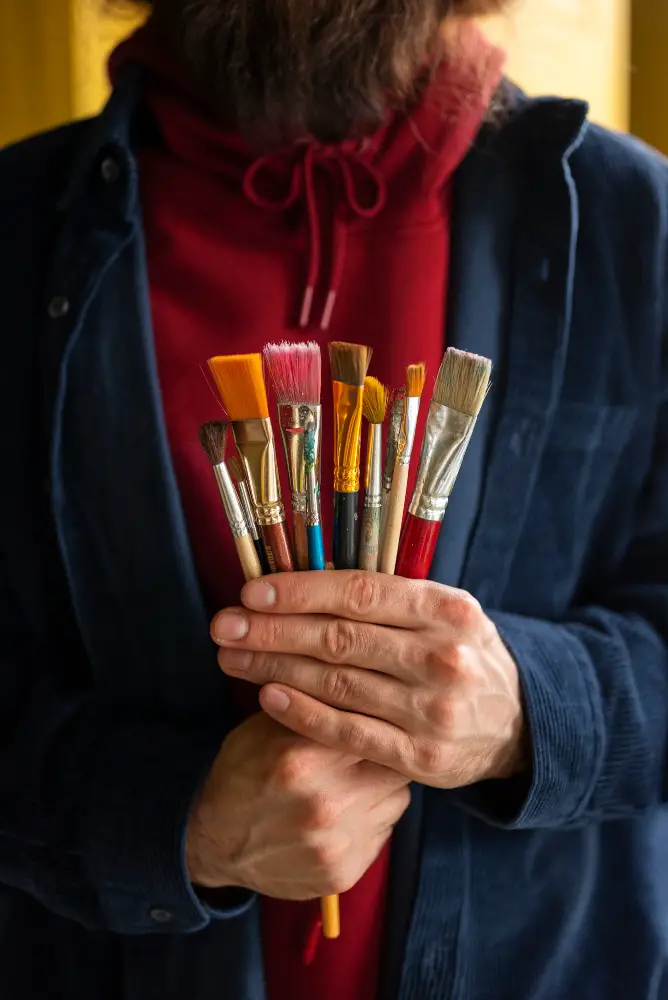Last updated on
Victor Navlet remains one of the art world’s more enigmatic figures, a painter whose legacy is as compelling as it is underappreciated. Born into a world on the cusp of modernity, Navlet’s artistry bridged the gap between traditional and emerging styles, leaving a mark that resonates to this day.
What's Inside
Early Life and Artistic Influences

Navlet’s early life was marked by a profound exposure to diverse artistic influences. Born in the late 19th century, his formative years were spent in an era where art was undergoing a significant transformation.
From the fading echoes of Romanticism to the bold strokes of Impressionism, Navlet’s surroundings were a melting pot of artistic movements. This diverse exposure laid the groundwork for his unique style – a fusion of classical techniques with a hint of modern sensibility.
Artistic Approach and Style
The heart of Navlet’s art lay in his ability to capture the essence of his subjects. Whether it was a landscape bathed in the golden light of dusk or a portrait that seemed to delve into the soul of its subject, his paintings were more than mere representations; they were a dialogue between the artist and the world around him.
This ability to connect with his audience through canvas and paint was what set Navlet apart in an era brimming with artistic talent.
Career Development and Independence

As Navlet’s career progressed, his work began to garner attention. Yet, he remained somewhat of an outsider, never fully aligning with any single art movement. This independence was both a strength and a curse. It allowed him the freedom to explore and innovate but also meant that he often walked a solitary path in the art world.
Influence and Art Reproduction
Navlet’s influence extended beyond his original works. In an era where art reproduction was gaining prominence, his paintings became popular choices for replication. These reproductions played a crucial role in democratizing art, making masterful works accessible to a broader audience. For more on the world of art reproduction, click here.
Mastery in Oil Painting
Navlet’s technique in oil painting was particularly noteworthy. He had an uncanny ability to manipulate light and shadow, giving his paintings a lifelike quality that was both captivating and evocative. His landscapes, in particular, were a testament to this skill, often depicting scenes that felt both real and ethereal.
Personal Struggles and Challenges
Despite his talents, Navlet’s life was not without its struggles. The challenges of the artistic life in his era – the financial instability, the need for patronage, and the capricious nature of public taste – were constant companions. Yet, he persevered, driven by a relentless passion for his craft.
Later Years and Diminishing Public Attention
Navlet’s later years saw a gradual retreat from the public eye. As new movements swept through the art world, his work began to be overshadowed by the avant-garde artists of the time. However, this did not dampen his spirit. He continued to paint, his work evolving in quiet solitude.
Legacy
Today, Victor Navlet’s legacy is a tapestry of obscurity and reverence. His paintings, both originals and reproductions, continue to be celebrated for their beauty and emotional depth. In galleries and private collections, they stand as a reminder of an artist who, in his silence, spoke volumes.
The Takeaway
Victor Navlet’s life and work embody the journey of an artist who, despite not basking in the limelight, left an indelible mark on the art world. His story is a blend of talent, perseverance, and the quiet triumph of an artist true to his vision. As we revisit his works, we are reminded of the timeless nature of true artistry – a legacy that transcends the boundaries of time and trend.




